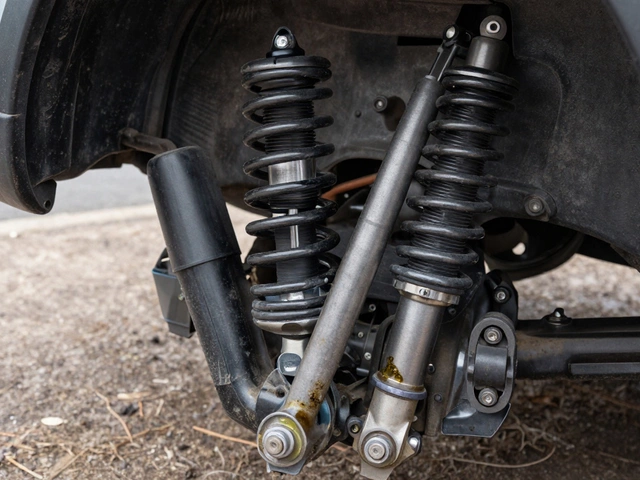Shocks: Signs of Failure, Replacement Costs, and What Happens When They Wear Out
When your car’s shocks, devices that control spring movement and keep tires in contact with the road. Also known as shock absorbers, they don’t just make your ride smoother—they’re critical for stopping distance, handling, and tire life. If they’re worn, your car doesn’t just bounce more. It becomes harder to control, especially in wet conditions or during sudden turns. Many drivers ignore the signs until they feel unsafe, but bad shocks don’t fail with a bang—they fade slowly, tricking you into thinking it’s just an old car.
Suspension problems, issues with the system that connects wheels to the vehicle and absorbs road impacts often start with shocks. A failing shock means your tires bounce instead of gripping, which increases braking distance and causes uneven tire wear. You might not notice it right away, but if your car dives forward when braking, sways on curves, or feels floaty over bumps, those are red flags. And yes, driving with bad shocks for too long can damage other parts—like your steering system or even your engine, because the extra vibration travels through the frame.
There’s no fixed mileage for when shocks wear out. Some last 50,000 miles; others go 100,000, depending on roads, load, and driving style. But symptoms don’t lie. Look for oil leaks on the shock body, a nose-dive when stopping, or if your car feels like it’s floating over speed bumps. A simple bounce test—press down hard on each corner and let go—can tell you a lot. If it bounces more than once or twice, your shocks are likely done.
Replacing shocks isn’t just about comfort. It’s about safety. Studies show that vehicles with worn shocks take up to 20% longer to stop in emergency situations. That’s the difference between avoiding a crash and hitting it. And while you might think it’s expensive, waiting makes it worse. Worn shocks cause premature tire wear, which costs more than new shocks. They also put stress on other suspension parts, turning a simple fix into a full rebuild.
You’ll find real-world examples in the posts below—how to check your shocks at home, what it feels like when they’re failing, how long you can drive with bad ones, and why ignoring them is a gamble you can’t afford. Whether you’re noticing a clunk over bumps or just feel like your car’s lost its grip, the answers are here. No theory. No fluff. Just what you need to know to keep your car safe and under control.





